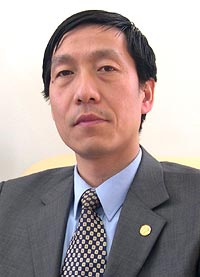2005 Articles
Beijing Brio: Coming to America
 |
| Brio's Yang Tongxing |
While contract assembly operations are popping up all over China, the most heralded ones belong to North American or Taiwanese ODM and EMS companies. Still, China has a lengthy list of domestic firms, and some of these are beginning to return the favor. One such company, Beijing Brio Technology (brio-tech.com), recently opened a sales and service office in Vancouver, Canada, an ambitious move for a micro-cap EMS firm whose 2004 revenues were $32 million (20% turnkey, 80% consignment). To date, Brio has plants in Beijing (where it operates 10 fully automated SMT lines) and Shanghai, plus a subsidiary in Shandong. But serving the company’s blue-chip roster of customers – including Pioneer, JVC, GE and Philips – demanded a North American presence, as president Yang Tongxing explained in an interview with Circuits Assembly editor-in-chief Mike Buetow in late June.
CA: Brio recently decided to put an office in North America. Do you have plans to add manufacturing operations and if so, when?
YT: Brio has always strived to offer our customers value-added services. We treat customers’ needs as our own needs. As such, Brio might consider turning the current division [Ed: Vancouver] into a manufacturing operation, contingent upon customers’ demands. We would look at either buying a running operation or setting up a small plant on our own. The manufacturing operation could be situated, but is not limited to, the current location. The prime purpose for setting up the manufacturing operation is to be close to customers’ base to readily and timely provide customers with prototype, pre-production and post-sale warranty services.
CA: What mode of transportation (air, boat, land) is typically used when shipping product to other regions?
YT: We use boat for shipments from mainland China to North America; land for transportation between North American regions. Air is only for expedited or special shipments.
CA: How would you describe Brio’s management philosophy?
YT: Brio has learned tremendously through experiences with multinational companies from the U.S., Japan and Europe. As such, Brio has formed its management philosophy based on the integration of their sophisticated management style. Japanese quality management style is particularly embraced by Brio for mass-production management. Brio puts a strong emphasis on continuous improvement methods to keep the plant abreast of the constant developments in EMS. We will always learn from others, adopt 5S, Lean Manufacturing and Six Sigma quality systems for continuous improvement within the entire operation.
CA: What do you perceive to be the advantages and disadvantages in manufacturing in China versus elsewhere in the world?
YT: China has evolved to become a world manufacturing base as a result of substantial manufacturing cost savings, vast domestic market potential, increasing emphasis on quality, highly skilled labor and rapid development of infrastructural facilities. These are the advantages for North Americans doing EMS in China. The prevailing disadvantages for EMS in China are: geographic location (relatively far from North American customers), different working time zones and relatively poor communication in English. It’s worth pointing out here that Brio, by opening this branch division in North America, has taken care of these drawbacks.
CA: What is the most difficult hurdle to overcome in convincing North American OEMs to do business with a Chinese EMS firm?
YT: I would say the lack of real understanding of China is the No. 1 challenge. The majority of companies in China today are trustworthy. Brio, always striving to lead by example, hopes to be regarded as an eye-opener for the world to realize the credibility of doing business with Chinese companies.
Two other factors contribute to make it difficult in convincing North American companies to do business with a Chinese firm: proficiency in English, especially in areas of technical and quality terminologies, and slow response and distant geographic location, which result in a sense of inefficiency and insecurity.
CA: Do you use any Chinese-made processing or test equipment or materials? Also, how would you characterize the quality of Chinese-made electronics manufacturing equipment? Does it have a place in the world market?
YT: Annual imports of SMT equipment to China accounts for 50% of total SMT throughput in the world.
Although Chinese-made SMT equipment is available, the overall quality is not on par with that made in Japan and Germany. Chinese-made support equipment, however, such as ICT, AOI, rework stations, reflow ovens, etc., have permeated EMS operations. Brio currently mainly uses Japanese-made equipment because of its market-approved efficiency and reliability. However, we do use Chinese-made supporting equipment such as oscilloscopes and spectrum analyzers.
I personally characterize the quality of Chinese-made electronics manufacturing equipment as being good, and I believe Chinese-made equipment will establish a strong presence in the world market in the near future as a result of its low cost and improved quality.




